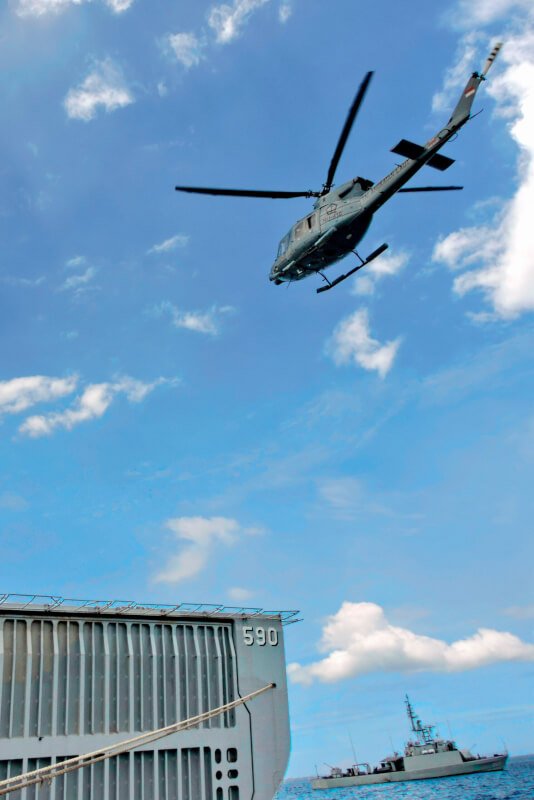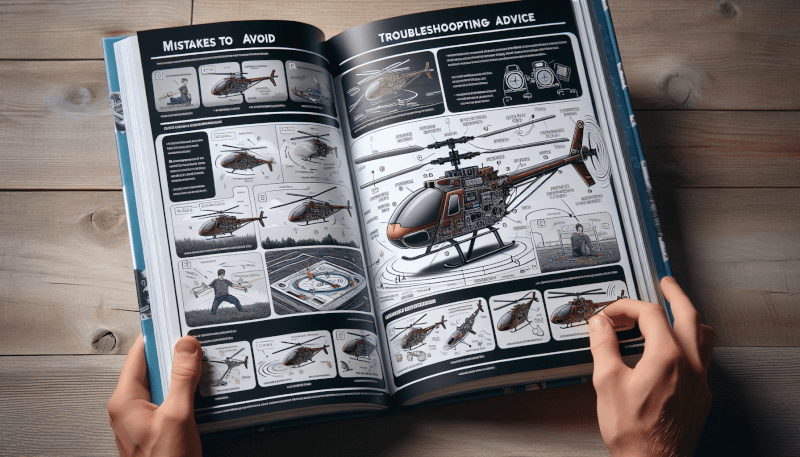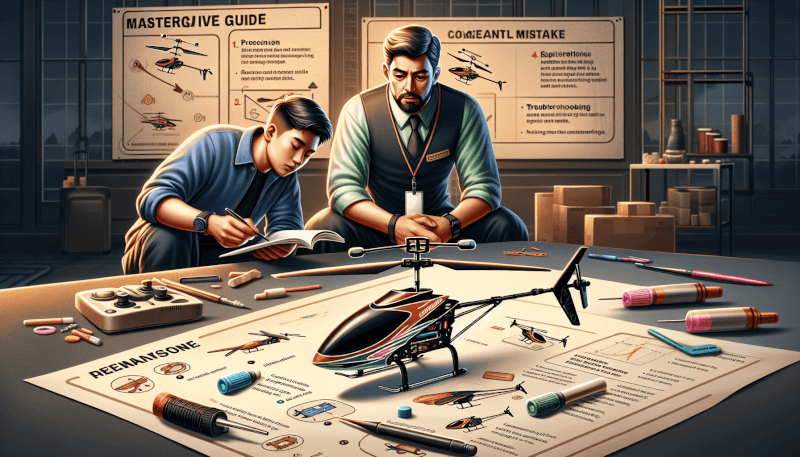Imagine the excitement of flying your own RC helicopter, soaring through the sky with precision and control. But amidst all the fun and thrill, the one crucial moment that can make or break your experience is the landing. It’s the moment where finesse and skill come into play, and the difference between a successful landing and a catastrophic crash. In this article, we will guide you through the essential steps and techniques to ensure that you land your RC helicopter safely every single time. So get ready to master the art of landing and enjoy countless hours of uninterrupted fun with your beloved RC helicopter.

Understanding the Basics of RC Helicopter Landing
Importance of practicing landing techniques
Practicing landing techniques is crucial in ensuring the safe operation of your RC helicopter. It allows you to gain valuable experience and refine your skills, improving your ability to make controlled landings consistently. By dedicating time to practice, you can minimize the risk of accidents, damages, and potential injuries. So, make it a priority to focus on mastering the art of landing.
Knowing your RC helicopter’s capabilities
Before attempting any landing, it is essential to have a thorough understanding of your RC helicopter’s capabilities. Familiarize yourself with its flight characteristics, weight, rotor speed, and power output. Knowing these details will help you determine the best approach and techniques to utilize during landings. Each RC helicopter may have slightly different characteristics, so taking the time to learn and adapt to your specific model is essential.
Factors affecting safe landings
Various factors can influence the safety and success of your RC helicopter landings. These factors include wind speed, direction, and turbulence, as well as the presence of obstacles or potential hazards in the landing area. Additionally, your own control input, coordination, and technique play a significant role. Being aware of these factors and adapting your approach accordingly is vital for a safe and successful landing.
Common mistakes to avoid during landing
To ensure smooth and safe landings, it’s essential to be aware of common mistakes and actively avoid them. One common mistake is misjudging the altitude and speed during the approach, which can result in a hard or crash landing. Another mistake is applying abrupt movements or jerking actions to the controls, leading to instability and loss of control. By focusing on maintaining a steady hand and making precise adjustments, you can avoid these errors and achieve smoother landings.
Pre-flight Preparations for Safe Landing
Checking the weather conditions
Before attempting any flight, including landings, it is imperative to check the weather conditions. Wind speed, precipitation, and visibility are critical factors to consider. Strong winds can significantly affect the stability and control of your RC helicopter during landing. It is advisable to avoid flying in adverse weather conditions, as they can increase the risk of accidents or damage to your aircraft.
Inspecting the helipad or landing area
Inspecting the helipad or landing area is an essential pre-flight preparation step. Ensure that the surface is free from debris, uneven patches, or any potential obstacles that could pose risks during landing. If flying in an unfamiliar location, take the time to survey the area and identify any potential hazards. By thoroughly inspecting and preparing the landing area, you can minimize the chances of encountering unexpected obstacles during your descent.
Ensuring proper battery charge
Having a fully charged battery is crucial for safe and controlled landings. Check the battery level before each flight and ensure it has enough capacity to complete your intended landing and subsequent flights. Insufficient battery charge can result in a loss of power and control, potentially leading to a crash during landing. Always prioritize maintaining a well-charged battery to ensure consistent and reliable performance.
Verifying transmitter and receiver functionality
The functionality of your transmitter and receiver is vital for maintaining control over your RC helicopter during landing. Before taking off, ensure that both components are in good working order. Test the range and responsiveness of the controls, ensuring there are no connectivity issues. Regularly check the batteries of your transmitter and receiver to ensure they have sufficient power. Verifying the functionality of these essential components will give you peace of mind and enhance the safety of your landings.
Mastering Hovering Techniques
Stabilizing your RC helicopter
Mastering hovering techniques is a fundamental skill in achieving safe and precise landings. Focus on stabilizing your RC helicopter by maintaining a steady altitude and avoiding unnecessary movements. By practicing and refining your hovering skills, you will develop the necessary control and coordination to execute smooth landings consistently.
Controlling altitude and yaw
Controlling altitude and yaw are crucial aspects of maneuvering your RC helicopter during landing. Gradually adjust your throttle to manage the altitude and descent rate. Simultaneously, maintain control over the yaw by smoothly turning the tail rotor, ensuring proper alignment with the landing spot. By precisely adjusting these controls, you can achieve a controlled descent and minimize the risk of collisions or hard landings.
Adjusting throttle incrementally
When preparing for landing, it is essential to adjust the throttle incrementally. Sudden or drastic changes in throttle can result in abrupt movements and loss of control. Smoothly reduce the throttle to initiate the descent, allowing the helicopter to gradually lose altitude. By making gradual adjustments, you can maintain stability and ensure a controlled landing.
Compensating for wind or other external factors
Wind and other external factors can influence the stability of your RC helicopter during landing. Compensate for these factors by making slight adjustments to the controls. Utilize the cyclic controls to counteract the wind’s effect and maintain a stable position. By carefully compensating for external factors, you can achieve a smooth descent and land safely.
Choosing the Right Landing Spot
Selecting an open, level area
When choosing a landing spot, prioritize finding an open and level area. Open areas provide ample space to maneuver and reduce the likelihood of colliding with obstacles. Additionally, a level surface ensures stability and minimizes the risk of a tilted or unbalanced landing. Aim for flat and obstacle-free spaces to increase the chances of a safe and successful landing.
Avoiding obstacles and potential hazards
Avoiding obstacles and potential hazards is crucial for safe landings. Before selecting your landing spot, survey the area for any potential dangers such as trees, power lines, or buildings. Take note of any nearby objects that could impede your descent or pose a risk during landing. By choosing a landing spot that avoids all potential hazards, you can enhance the safety of your operations.
Considering wind direction
Wind direction plays a significant role in determining the optimal landing approach. Assess the wind direction before choosing your landing spot. Aim to approach the landing spot against the wind to maximize control and minimize drift. Landing into the wind allows for better control over the helicopter’s forward speed, ensuring a controlled and safe landing.
Looking for a safe touchdown point
When selecting a landing spot, look for a safe touchdown point. Identify a specific spot within the landing area where you aim to touch down. This provides a clear reference point to focus on during the approach and descent. By aiming for a designated touchdown point, you can maintain control and precision throughout the landing process.

Approach and Descent Techniques
Maintaining a gradual descent angle
Maintaining a gradual descent angle is crucial for achieving smooth landings. Avoid steep descents, as they increase the risk of a hard impact or even a crash. Instead, aim for a shallow and controlled descent angle. This allows for better control over your RC helicopter, ensuring a safe and precise landing.
Using proper throttle control
Throttle control is essential during the approach and descent. Adjust the throttle incrementally to achieve a controlled descent rate. Make small and precise adjustments to maintain the desired altitude and speed. By using proper throttle control, you can enhance stability and ensure a smooth landing.
Adjusting cyclic controls for stability
The cyclic controls play a significant role in stabilizing your RC helicopter during landing. Adjust the cyclic controls to compensate for any wind or external factors affecting the helicopter’s stability. Make subtle adjustments to maintain a level position and counteract any drift or movement. By skillfully utilizing the cyclic controls, you can achieve a stable approach and controlled landing.
Monitoring altitude and speed during approach
Continuously monitor the altitude and speed during the approach to ensure a safe landing. Maintain a steady altitude and avoid sudden changes. Pay attention to your RC helicopter’s speed, ensuring it remains within a safe range for landing. By actively monitoring and adjusting the altitude and speed, you can maintain control and execute a successful landing.
Maintaining Control During Landing
Keeping a steady hand on the controls
Maintaining a steady hand on the controls is crucial for maintaining control during landing. Avoid excessive or erratic movements, as they can result in unstable or hard landings. Instead, focus on making small, precise adjustments to maintain stability and control. By keeping a steady hand, you can ensure a smooth and controlled landing.
Balancing collective and cyclic inputs
Balancing collective and cyclic inputs is essential for maintaining control and stability during landing. The collective controls the main rotor’s collective pitch, affecting the RC helicopter’s overall lift. The cyclic controls the main rotor’s swashplate and controls movement in different directions. Maintain a proper balance between both inputs to achieve a controlled and balanced landing. By skillfully managing collective and cyclic inputs, you can achieve safe and precise landings.
Applying controlled flare for soft landings
Applying a controlled flare is a technique that can help achieve soft landings. As you approach the touchdown point, gently increase the collective pitch to reduce the rate of descent. This gradual increase in lift allows for a smooth transition from descent to landing, resulting in a softer impact. By mastering the controlled flare technique, you can ensure soft and gentle landings.
Avoiding abrupt movements or jerking actions
During landing, it is crucial to avoid abrupt movements or jerking actions on the controls. Such sudden inputs can destabilize the RC helicopter and result in unstable landings. Focus on making smooth and gradual adjustments to maintain control and stability. By avoiding abrupt movements, you can minimize the risk of losing control and achieve safe landings.

Emergency Landing Procedures
Recognizing signs of a potential crash
It is essential to recognize signs of a potential crash or emergency situation during landing. These signs may include a loss of control, unusual vibrations, or sudden changes in behavior. If you notice any indications of an impending crash, react promptly and take appropriate emergency landing measures. By being alert and responsive, you can minimize potential damage and risks.
Executing an emergency landing maneuver
In the event of an emergency, executing an emergency landing maneuver is crucial. Quickly assess the situation and identify a safe landing area. Gradually reduce the throttle to initiate the descent and aim for the identified spot. Maintain control and stability during the emergency landing, prioritizing the safety of yourself and others in the vicinity.
Minimizing damage and safety risks
During an emergency landing, it is important to prioritize minimizing damage and safety risks. Focus on maintaining control and stability to ensure a controlled impact. Aim for an open area that minimizes the chances of collisions with objects or bystanders. By taking swift and decisive action, you can lessen potential damage and mitigate safety risks.
Post-emergency landing precautions
After an emergency landing, it is essential to observe post-landing precautions. Assess the condition of your RC helicopter and identify any damage or malfunctions. Inspect the surrounding area to ensure no hazards have been created. It is advisable to perform a thorough post-flight check before attempting further operations. By taking these precautions, you can ensure the continued safety and functionality of your RC helicopter.
Fine-tuning Your Landing Skills
Practicing different landing techniques
To fine-tune your landing skills, practice different landing techniques. Experiment with various approaches, descent angles, and throttle control settings. By practicing a diverse range of techniques, you will develop adaptability and proficiency in handling different landing scenarios. Continuously challenging yourself will lead to continuous improvement and confidence in your landing abilities.
Utilizing flight simulators for training
Flight simulators can serve as valuable tools for training and enhancing your landing skills. Utilize RC helicopter flight simulators to practice various landing scenarios and refine your techniques in a safe virtual environment. Simulators allow you to experience different weather conditions, challenging terrains, and emergency situations, all without the risks associated with real-life operations. Take advantage of these training tools to boost your landing skills.
Seeking guidance from experienced pilots
If you are new to RC helicopter flying or want to improve your landing skills further, seeking guidance from experienced pilots can be immensely beneficial. Connect with local RC helicopter clubs or online communities to find experienced pilots willing to share their expertise. They can offer valuable insights, tips, and guidance on landing techniques. Learning from those who have already mastered the art of landing can accelerate your progress and help you avoid common pitfalls.
Analyzing and learning from each landing attempt
Every landing attempt provides an opportunity for learning and improvement. After each landing, take the time to analyze your performance. Reflect on the factors that contributed to a successful landing or any challenges you faced. Identify areas for improvement and make conscious efforts to address them in your future attempts. By continuously analyzing and learning from each landing, you can refine your skills and achieve consistent, safe landings.

Maintaining and Repairing Your RC Helicopter
Performing routine maintenance checks
Regularly performing routine maintenance checks is essential for the optimal performance and longevity of your RC helicopter. Inspect and clean the aircraft, paying close attention to critical components such as the rotor blades, servo gears, and motor. Additionally, check for any loose connections or worn-out parts. Performing routine maintenance ensures that your RC helicopter operates safely and reliably during landings.
Replacing damaged or worn-out parts
Any damaged or worn-out parts should be promptly replaced to maintain the integrity and safety of your RC helicopter. Regularly inspect all components and identify any signs of damage or excessive wear. Replace parts such as rotor blades, gears, or landing gear if they show significant signs of wear or damage. By replacing damaged or worn-out parts, you can ensure the continued safe operation of your RC helicopter.
Inspecting and cleaning the landing gear
The landing gear is an essential component that supports and stabilizes your RC helicopter during landing. Regularly inspect the landing gear for any signs of damage or wear. Clean the landing gear to remove dirt or debris that may affect its functionality. A well-maintained landing gear provides stability and balance during landings, enhancing safety and control.
Calibrating controls for optimal performance
Periodically calibrating the controls of your RC helicopter is crucial for optimal performance. Check the transmitter and receiver settings to ensure accurate and precise control inputs. Adjust the control endpoints, trims, and sensitivity as necessary. Proper calibration ensures that your RC helicopter responds accurately to your control inputs, improving the safety and accuracy of landings.
Conclusion
By following the guidelines outlined in this article, you can ensure safe and successful landings with your RC helicopter. The importance of practicing landing techniques, understanding your RC helicopter’s capabilities, and considering various factors affecting safe landings cannot be overstated. Focus on mastering hovering techniques, selecting the right landing spot, and executing the approach and descent effectively. Maintain control during landing, be prepared for emergency situations, and continuously fine-tune your skills. Lastly, prioritize the maintenance and repair of your RC helicopter to ensure optimal performance. With continuous practice, improvement, and confidence, you can enjoy the RC helicopter hobby to the fullest. Happy flying!



